Having a strong core is a vital consideration as you age. It is a foundation which provides you with the ability to express power, stability and resilience. A famous strength coach once said “you can’t fire a cannon from a canoe”, the point being that force production requires a solid base, in this case your core.
The core consists of various muscles, including but not limited to the six pack, and extends to the hips and lower back. They are in constant use, so testing their strength involves a level of endurance, and a common exercise to do this is the front plank.
How to Measure Core Strength
The front plank involves holding a rigid body position on your forearms. The lower body should ideally be in contact through the feet, though in some circumstances the knees can be used.
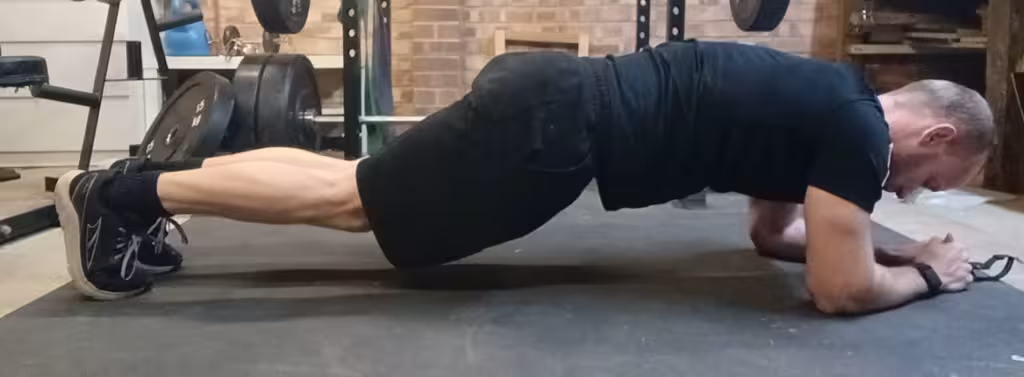
The correct technique is as follows:
- The feet should be no more than shoulder width apart. Much wider than this and it’s not testing your stabilising muscles enough.
- The lower back should not be excessively arched or rounded.
- Think about making a straight line between your ankle, knee, hip and shoulder.
- Head should be neutral, in line with the body
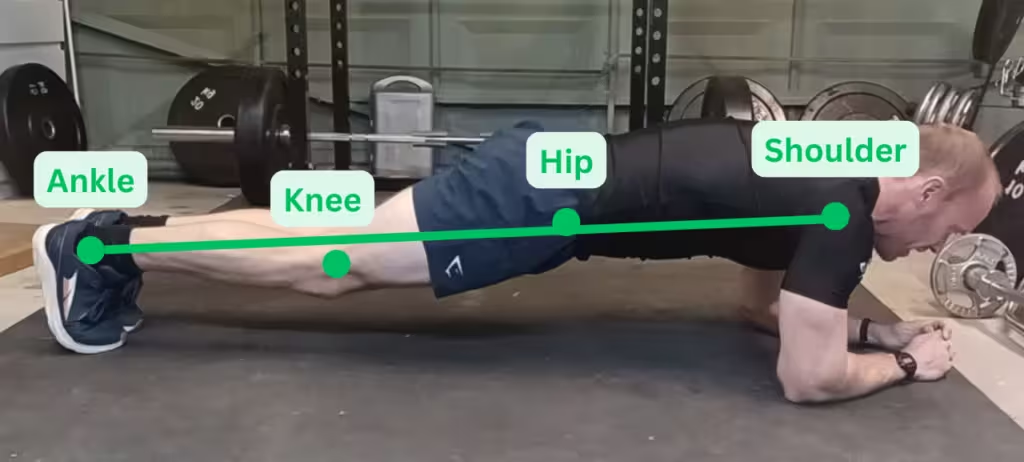
This is an isometric hold, which means you are holding a fixed position without moving. Assessment should be the maximum length of time you can hold a front plank without a break. A significant loss of technique would be considered the end of the hold, such as excessive sagging of the hips, as well as the more obvious failure where something other than your forearms or toes touches the ground.
The position of the forearms makes it relatively easy to have a stopwatch or phone nearby for starting and stopping a timer.
There is a very low injury risk with isometric holds, though a brief warm up should be considered. This might involve several minutes of jogging on the spot, body-weight squats, and arm swings to warm up the shoulders.
What Do My Results Mean?
Your front plank result will be the number of minutes and seconds of your maximum hold. The following normative values have been created based on several online resources, including the decline seen with age in similar exercises like maximal sit ups.
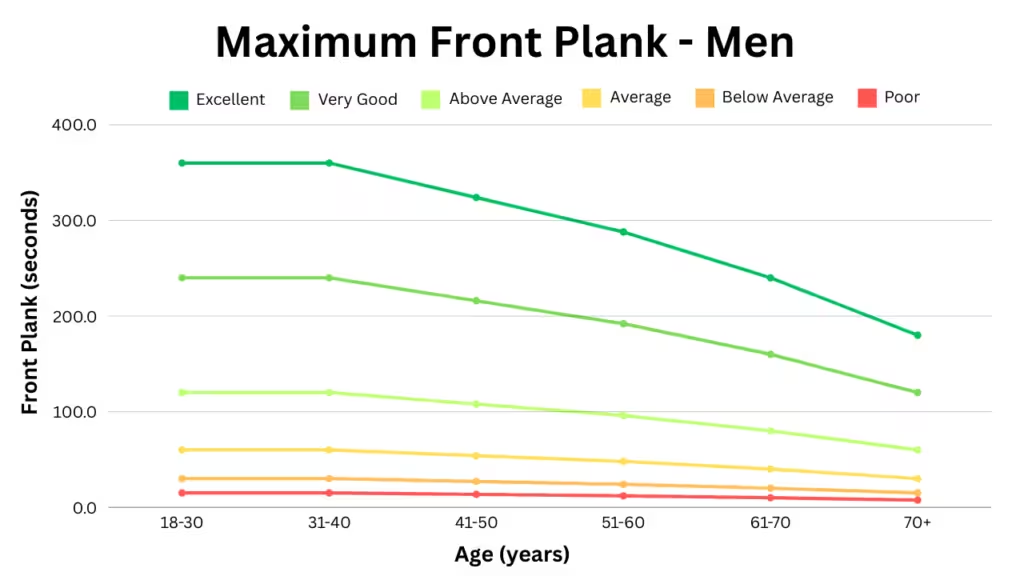
Here a 6 minute front plank (360 seconds) would be considered “Excellent” for men under 40. That drops to 4 minutes for “Very Good”, 2 minutes for “Above Average” and 60 seconds for “Average”. The decline is roughly 1% a year from the age of 40, with a steeper decline after the age of 70.
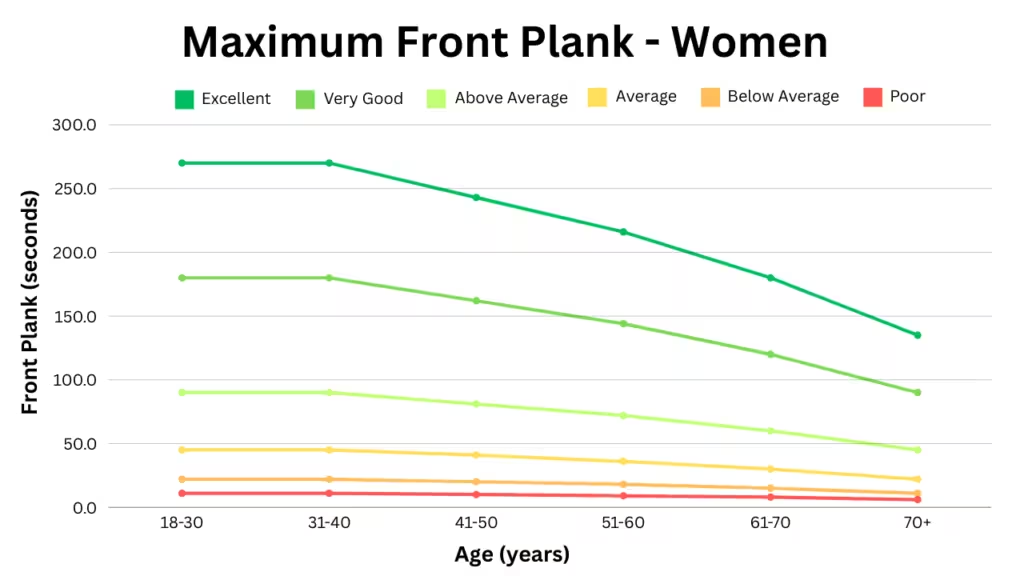
For women, the age related decline is maintained, and values are scaled down by 25% compared to men. That leaves “Excellent” at 4 minutes 30 seconds and average at 45 seconds. In reality women may see a steeper decline after menopause due to the reduction in oestrogen levels.
Tracking Over Time
This is a relatively simple test that only requires a timer or stopwatch, so it can be assessed frequently. However, unless you are undertaking a new exercise program, core strength is unlikely to change much over the course of 3 months. Personally I have been assessing my maximum front plank every year, though I may move to every 6 months in future.
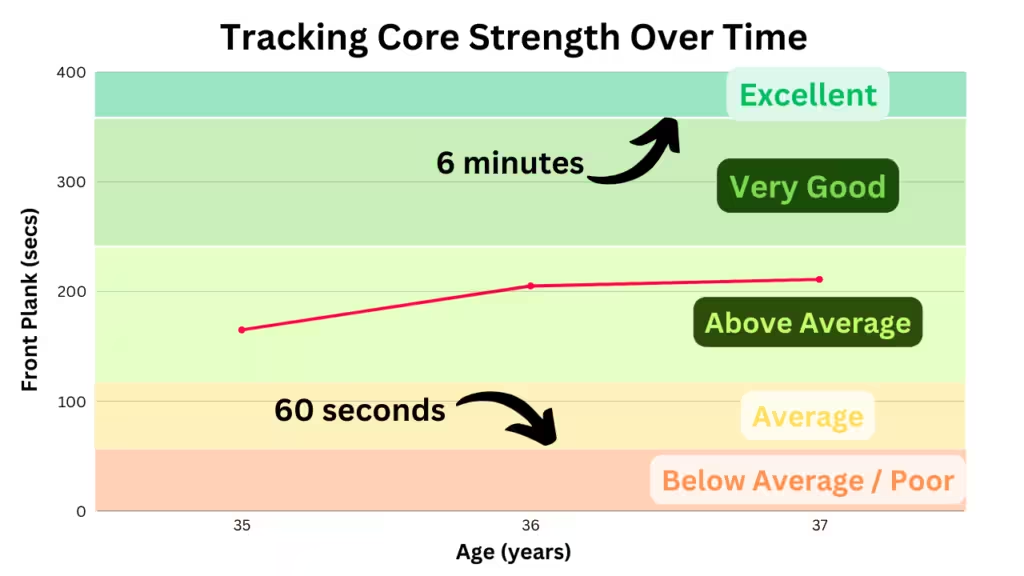
Here you can see my results for the first three years tracking maximum front plank. With a latest time of 3 minutes 31 seconds, that puts me in the “Above Average” category. If you are interested in completing this test, I have created a companion sheet for people to log their results over time.

